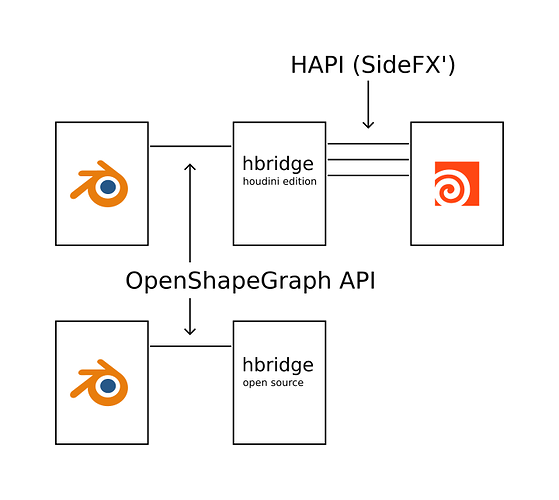Similar to Keavon’s suggestion…
Instead couldn’t a middleware Asset Engine (handler/converter) be constructed?
An Asset Engine (Handler/Converter) could do the following;
Steps
- Open Asset Engine (Handler/Converter).
- Select Houdini asset file.
- Edit parameter.
- Asset file (temp autosave) in Asset folder.
- Open Blender.
- Append Asset file (temp autosave) from Asset folder.
- Adjust Blender Asset Refresh to desired refresh rate.
- Continue editing in the Asset Engine (Handler/Converter).
The only linking to Blender, would be by the user appending an asset file in Blender.
Blender: Asset Refresh
- An asset refresh timer would allow Blender to update the asset data after X amount of time.
Asset Engine (Handler/Converter): Asset autosave
- A (temp autosave) would allow the Asset Engine to automatically save data after a parameter change.
If the update timing of the two programs a relatively the same, the user could have the asset update in Blender within moments of the Asset Engine parameter change.
Do to the nature of the middleware, the GPL should not be an issue.
Lol. In a sense, Blender could be used as a viewport for the Asset Engine (Handler/Converter).
You could create various plugins allowing other functions/programs to do the same.

 But it seems to refer to parameter overrides, not to some modifier-like standard. As far as I know, such a thing is not part of the USD format, but I’ll give it another look just in case. I am surprised tbh that there seems to be no open format for mesh effects, I would rather use something that already exists.
But it seems to refer to parameter overrides, not to some modifier-like standard. As far as I know, such a thing is not part of the USD format, but I’ll give it another look just in case. I am surprised tbh that there seems to be no open format for mesh effects, I would rather use something that already exists.